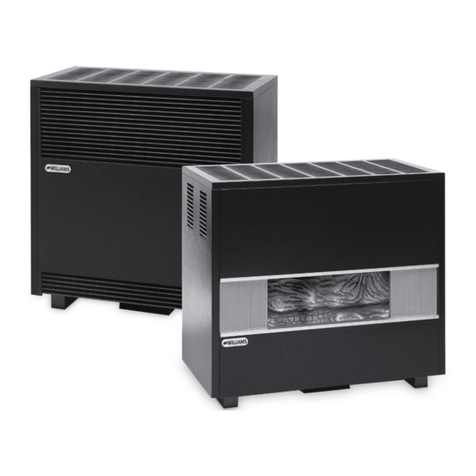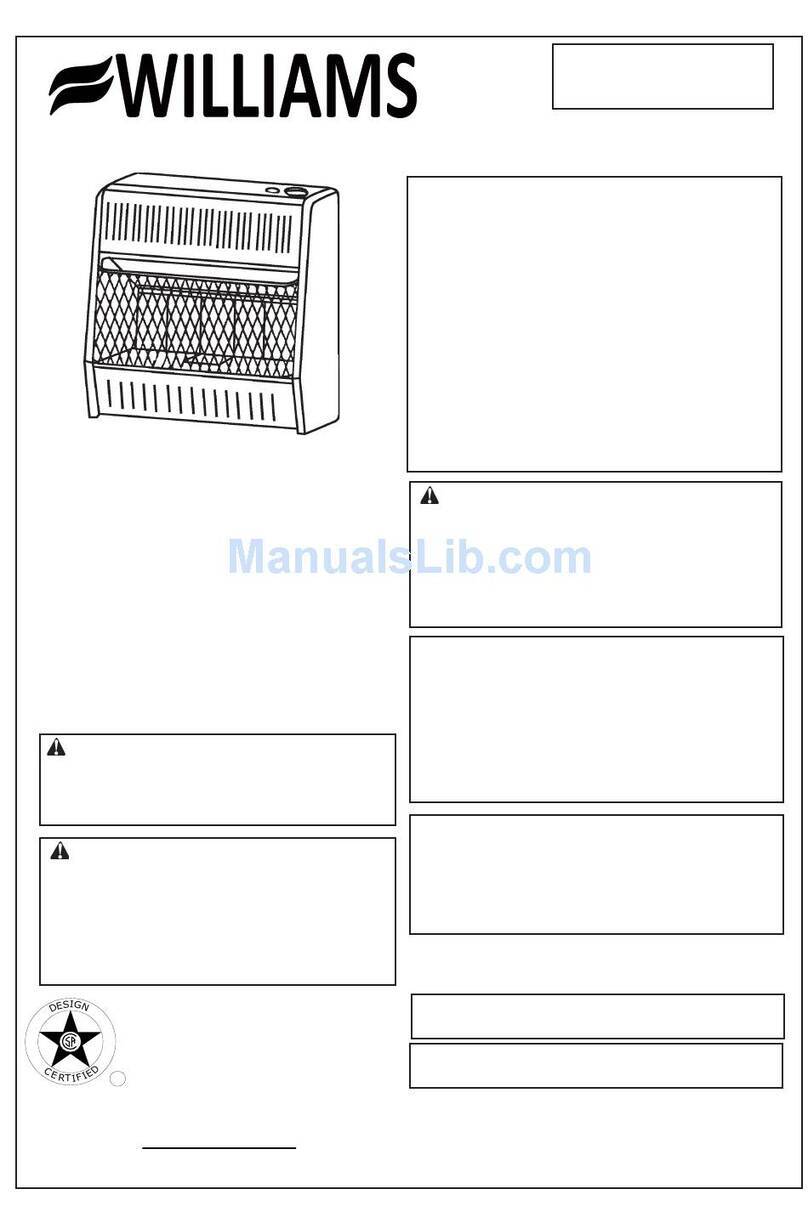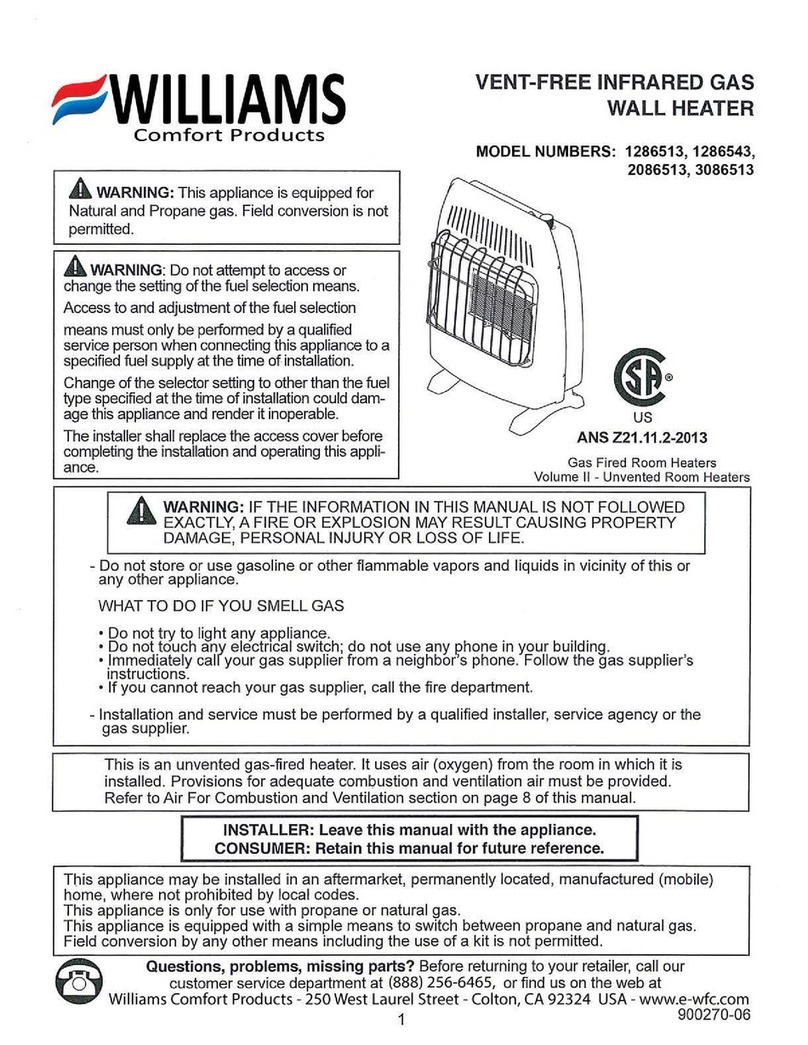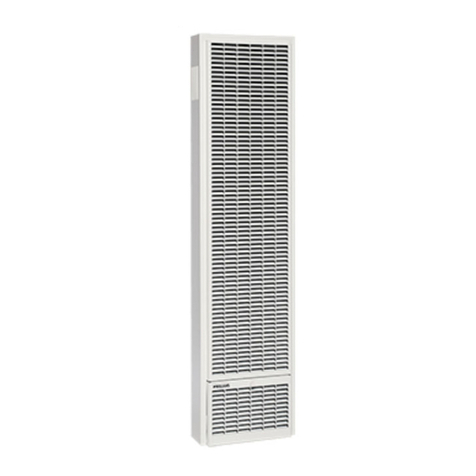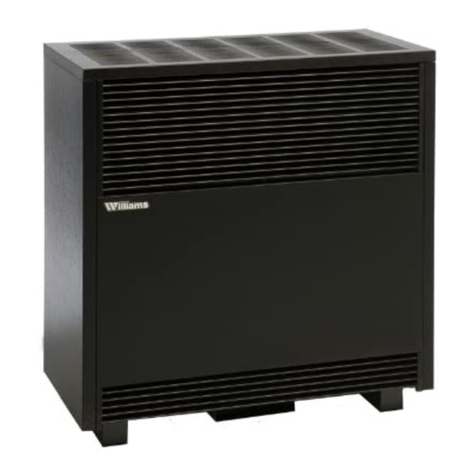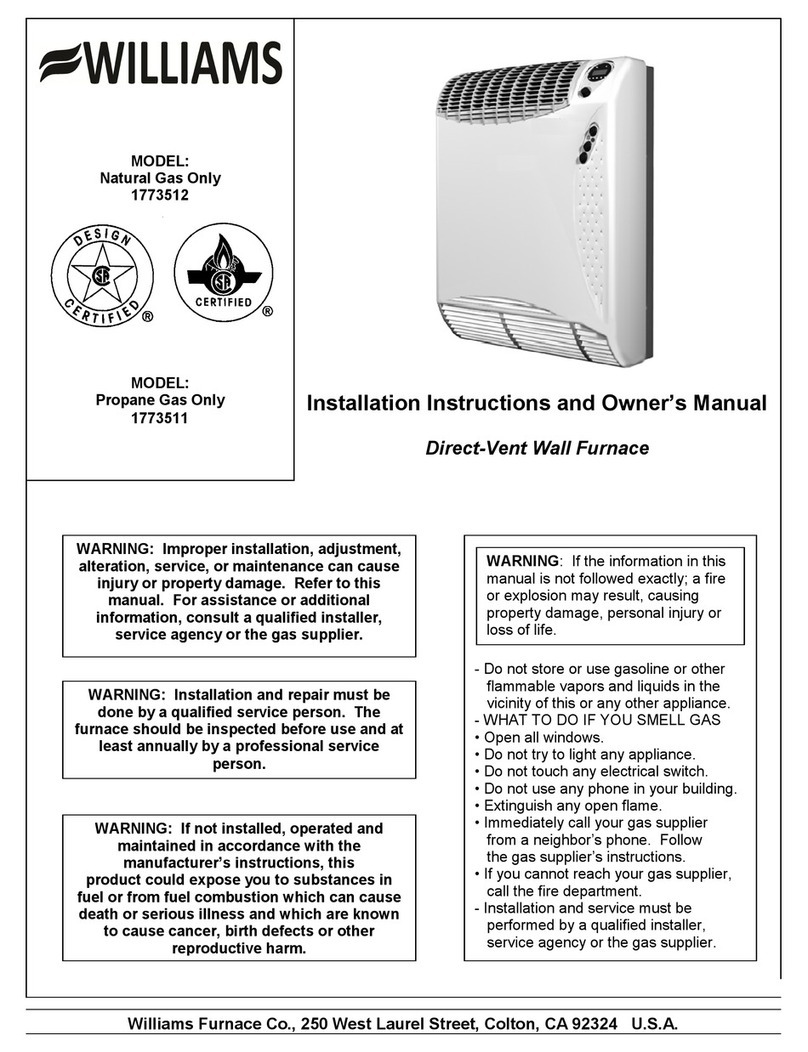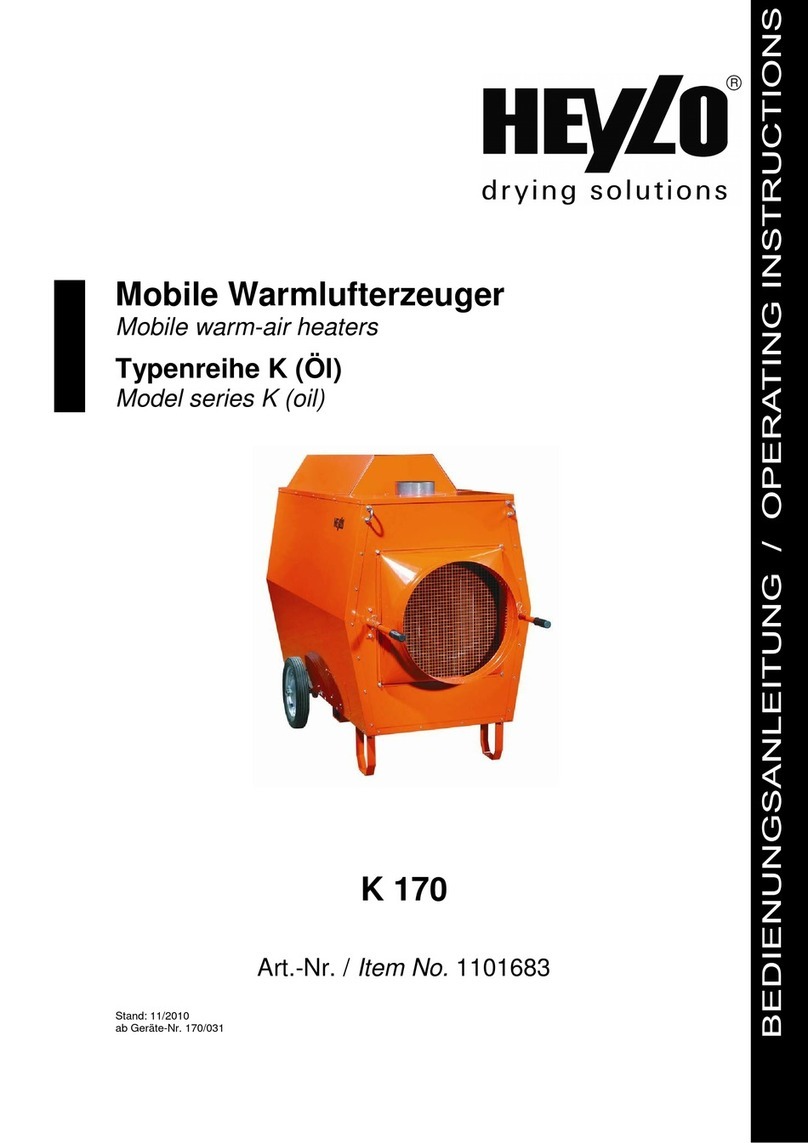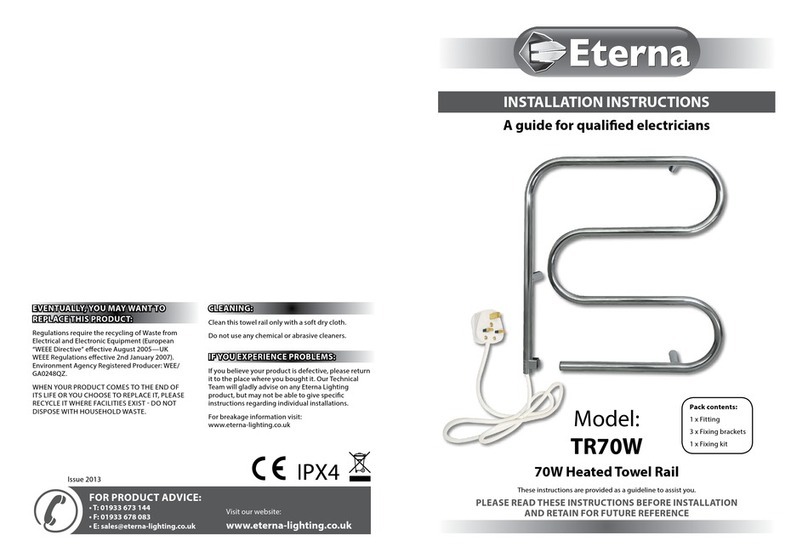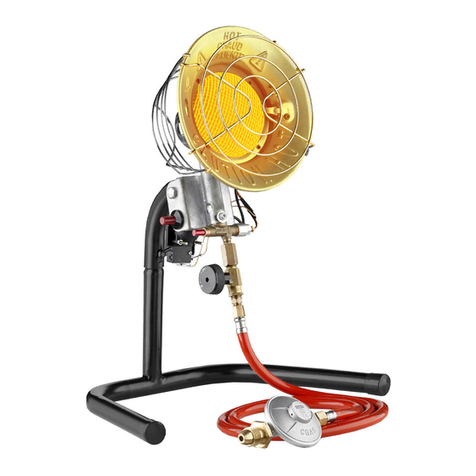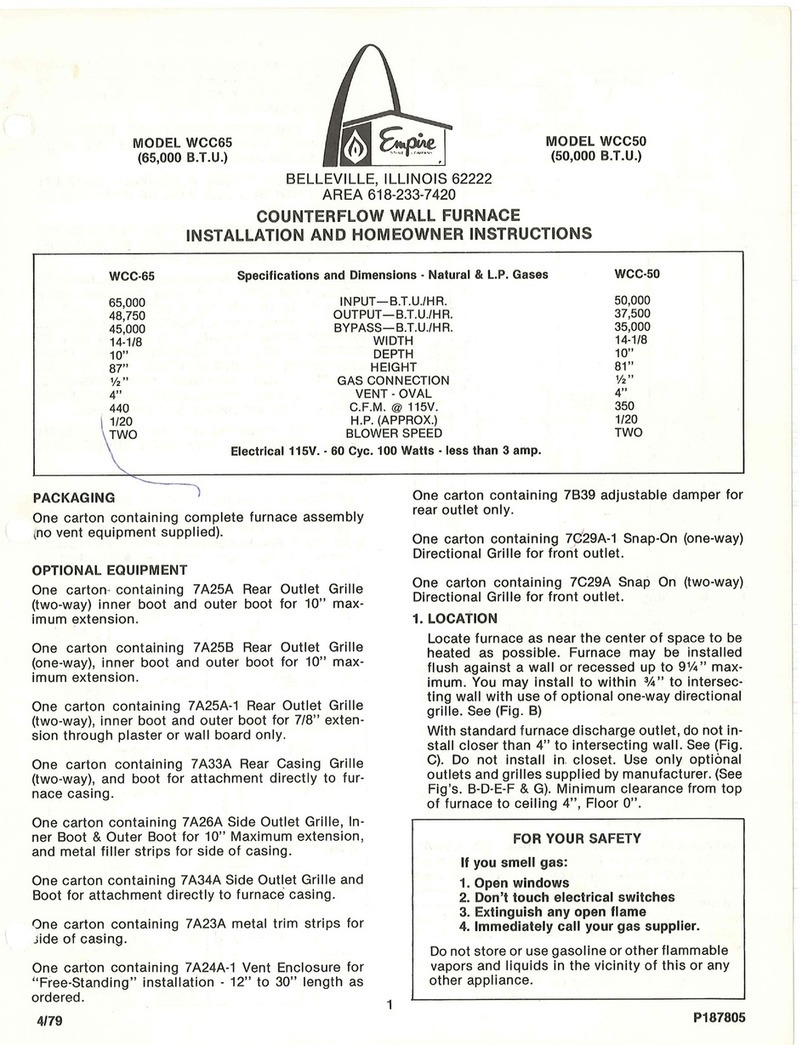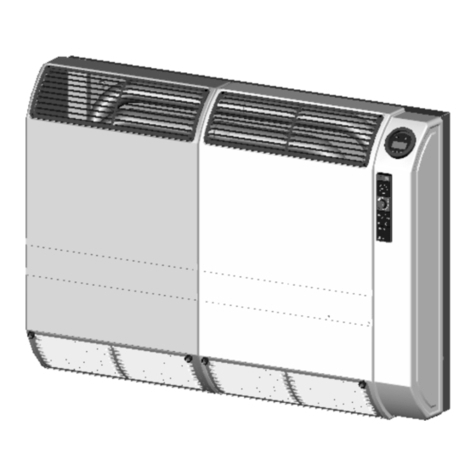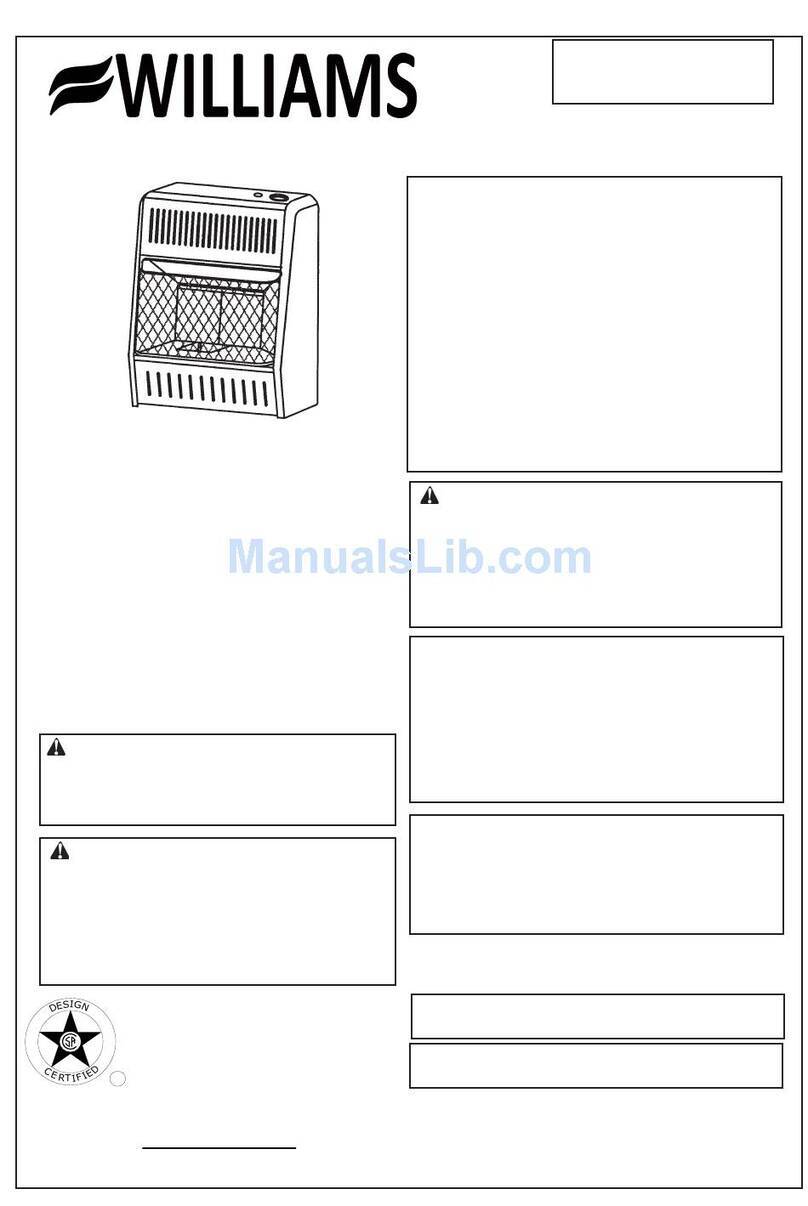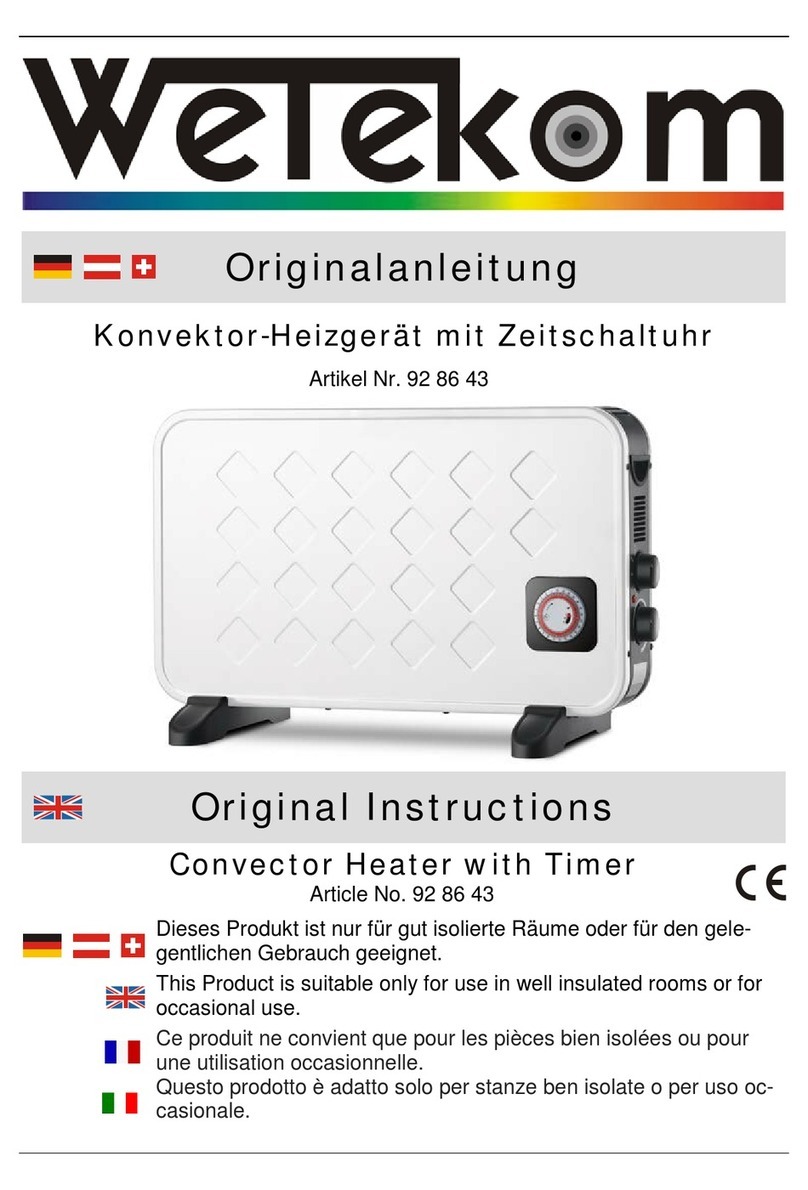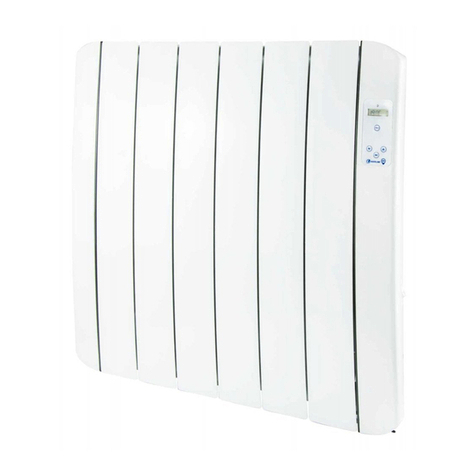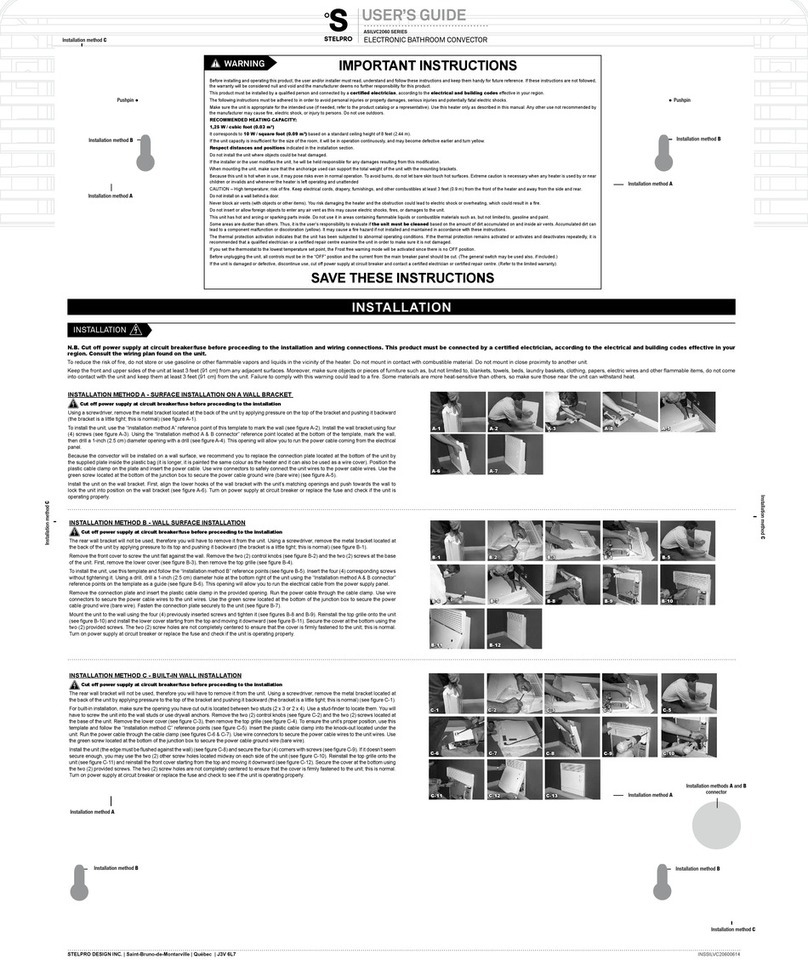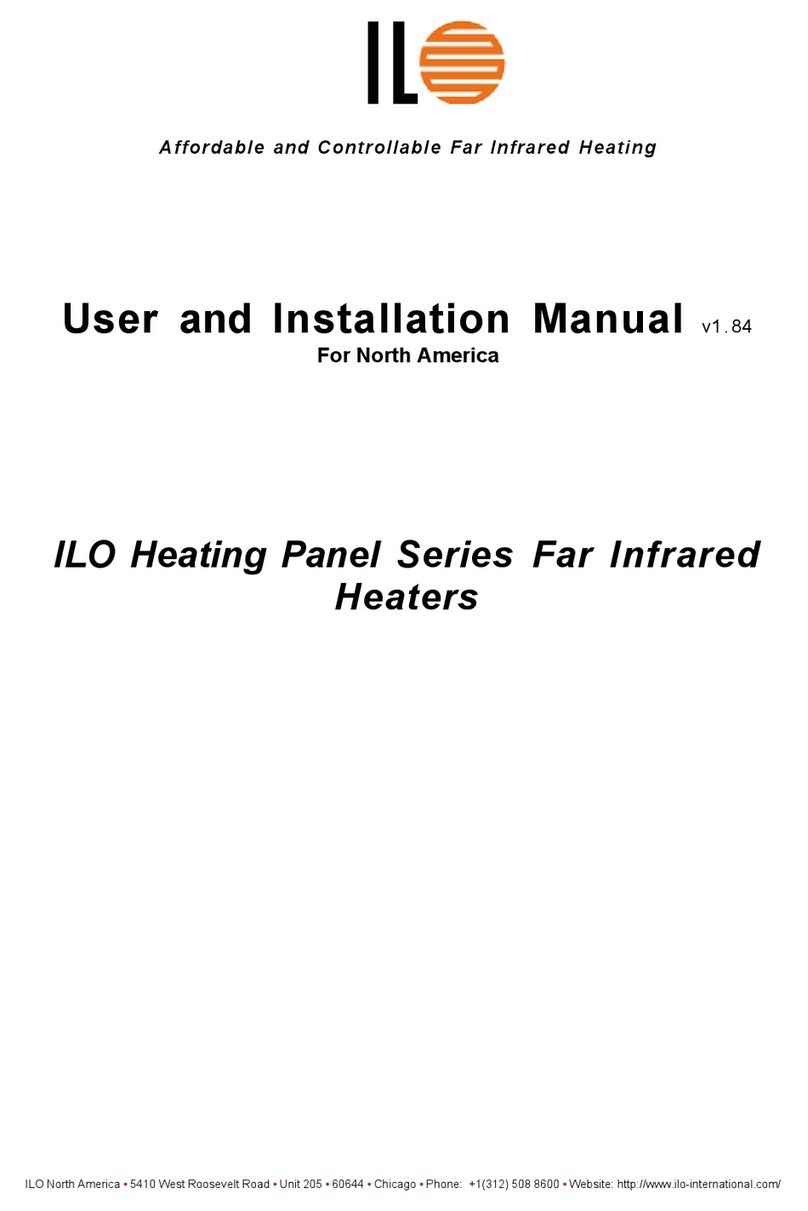
5
Installing Your Air Curtain
The following steps are needed for proper installation and safe operation of your air curtain. Installation must adhere to all local and
national code requirements. If you have any doubts as to any requirements, obtain professional help. Remember to ALWAYS consult
your local HVAC inspector or building department regarding regulations, codes, or ordinances which apply to the installation.
This unit must be installed in a manner which will allow the blower panel to be removed in order to clean the blower and motor and to
provide access to electrical connections.
It is the sole responsibility of the customer to provide the necessary protection to prevent vandalism and weather protection of the
equipment. Protect the units from dirt, plaster and other debris during the entire installation phase. Prior to start-up, the entire interior
of the unit should be inspected for debris and dirt. Clean, if necessary. Any failure of the unit or damage to the building as a result of
improperly protecting and cleaning the unit is not covered by the warranty.
Mounting
Units weigh 25 to 75 pounds. A minimum of two people are recommended for handling and installation.
Determine the location above the opening to where the air curtain is to be installed. It should be centered in the opening and as close
to the top of the opening as possible. Make sure there are no obstructions that will interfere with the air curtain discharge.
The wall mounting plate must be level and be securely mounted to the structure with sufficient load-carrying capacity to support the
weight of the equipment. All anchors for mounting must be placed and sized to ensure a safe installation. Mounting hardware is not
included.
Slide the top of the air curtain down to engage the top of the wall plate, then pivot the front down to the bottom of the plate. Using the
screws provided, attach the unit to the wall plate through the holes along the bottom edge of the plate. Ensure that there are no gaps
between the unit and wall.
Hanging mount - there are four threaded openings on top of the unit for suspending the unit from the ceiling, if desired.
For NSF Installations:
The installation height is 7 feet. Make sure there no obstructions that will interfere with the air curtain. Ensure that there are no gaps
between the unit and the wall.
Hanging mount option – Have pan head screws installed in the four threaded openings on top of the unit. These must be removed
before installation in the hanging mount position (suspension rods from the ceiling).
Electrical
No wiring or other work should be performed without verifying that the air curtain is completely disconnected from the power source and
locked out. Verify a good ground connection exists prior to energizing the power source.
All wiring must comply with local and national code requirements. Williams air curtains are provided with a wiring diagram and
nameplate data to provide the necessary information needed for field wiring. Wiring used for connections to the air curtain must be
rated for at least 90° centigrade. All wiring connections must be tight.
For outdoor wiring, motor wiring must go thru rainproof conduit and fittings to a rainproof electrical junction box located above the unit
with no more than 2 feet of conduit run so that the motor wires may reach the junction box without having splices. Do not make wire
splices inside the air curtain cabinet when it is being installed outdoors.
The motor must be properly wired prior to start up. The warranty on all motors is void if the motor is burned-out due to incorrect wiring.
Check the rating of the unit to determine: voltage, frequency, phase, amperage, appropriate switching, maximum over current protection
(MOP) and full load amps (FLA).
Any optional items, such as fan switches to be field installed must be wired in accordance with the wiring diagram supplied with the unit
and the switch manufacturer’s directions. See page 6 Figures 2 and 3.
Adjusting Air Foil Deflector
The air foils have 40° of adjustment. The majority (approximately 85%) of the air flow should be directed to the outside. See figure 1.
To adjust the air foils loosen the screws securing the air foil bracket. Adjust the air foils to the angle desired and retighten the screws.
